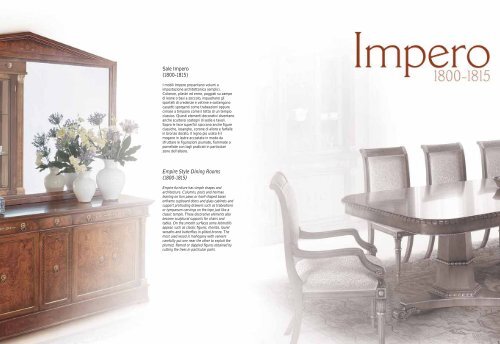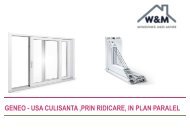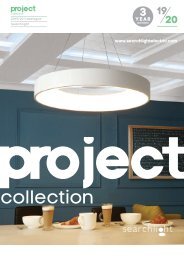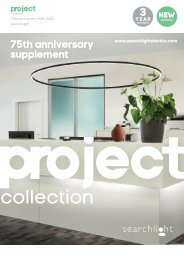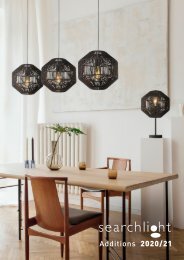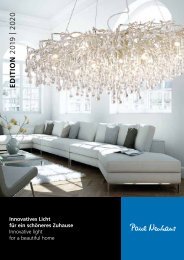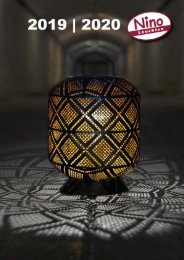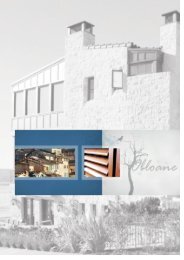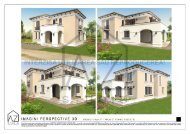Create successful ePaper yourself
Turn your PDF publications into a flip-book with our unique Google optimized e-Paper software.
Sale Impero<br />
(1800-18<strong>15</strong>)<br />
I mobili Impero presentano volumi e<br />
impostazione architettonica semplici.<br />
Colonne, pilastri ed erme, poggiati su zampe<br />
di leone o basi a zoccolo, inquadrano gli<br />
sportelli di credenze e vetrine e sostengono<br />
cassetti sporgenti come trabeazioni oppure<br />
cimase a timpano come il tetto di un tempio<br />
classico. Questi elementi decorativi diventano<br />
anche scultorei sostegni di sedie e tavoli.<br />
Sopra le lisce superfici spiccano anche figure<br />
classiche, losanghe, corone di alloro e farfalle<br />
in bronzo dorato. Il legno più usato è il<br />
mogano in lastre accostate in modo da<br />
sfruttare le figurazioni piumate, fiammate o<br />
pomellate con tagli praticati in particolari<br />
zone dell’albero.<br />
Empire Style Dining Rooms<br />
(1800-18<strong>15</strong>)<br />
Empire furniture has simple shapes and<br />
architecture. Columns, posts and hermae<br />
leaning on lion paws or hoof-shaped bases<br />
enframe cupboard doors and glass cabinets and<br />
support protruding drawers such as trabeations<br />
or tympanum carvings on the tope just like a<br />
classic temple. These decorative elements also<br />
become sculptural supports for chairs and<br />
tables. On the smooth surfaces some leitmotifs<br />
appear, such as classic figures, rhombs, laurel<br />
wreaths and butterflies in gilded bronze. The<br />
most used wood is mahogany with veneers<br />
carefully put one near the other to exploit the<br />
plumed, flamed or dappled figures obtained by<br />
cutting the trees in particular parts.


